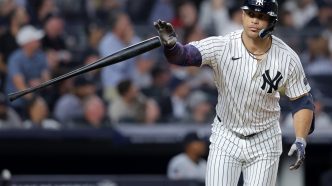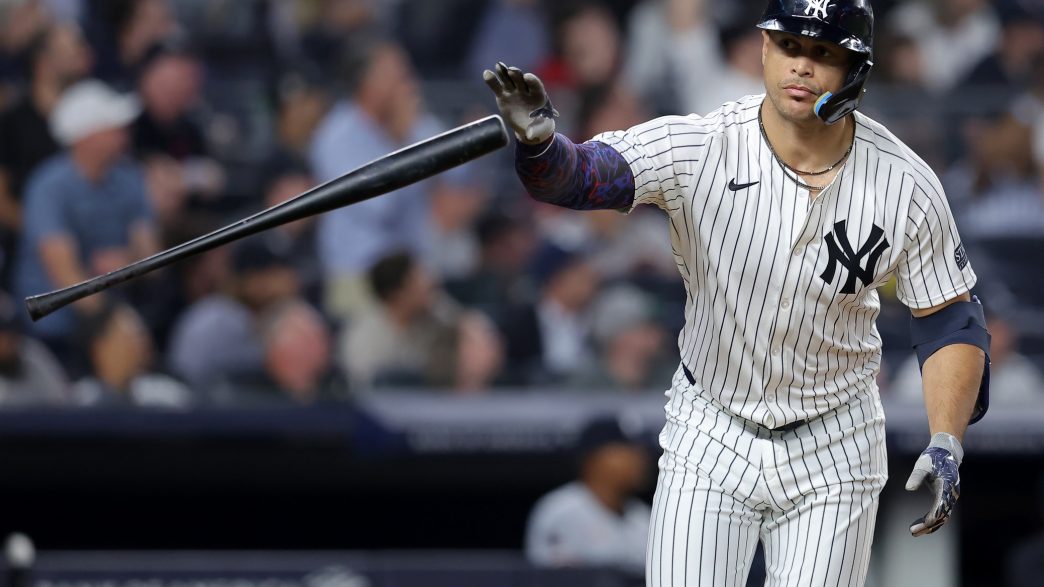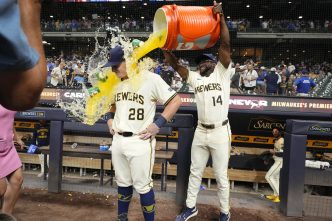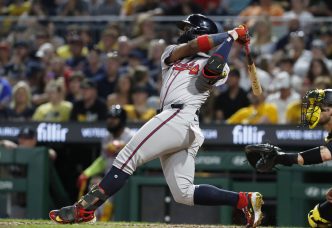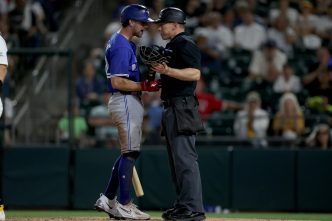Baseball has long worn the crown of America’s pastime, reveling in its constant quest for the next big breakthrough. Every new technique or training method promises to unlock untold wealth and success, captivating players and fans alike. Just like the latest viral trend, these fads can evaporate in the blink of an eye, yet the thrill of discovering a genuine game-changer remains eternally appealing.
The latest buzz in Major League Baseball following Opening Weekend isn’t about a standout player or an impressive team performance. Instead, the spotlight is shining brightly on a new piece of equipment known as the torpedo bat. Conversations with various front-office personnel, including scouts and analysts, reveal a collective curiosity about this innovation, underscoring the uncertainty that even seasoned professionals have when confronting this fresh approach to hitting.
The torpedo bat comes from the mind of Aaron Leanhardt, a former Yankees staffer now coaching with the Miami Marlins. Leanhardt’s design seeks to optimize a player’s offensive capabilities by redistributing the weight of the bat to improve contact probability, striking at the very heart of what hitters hope to achieve. As former big-league infielder Kevin Smith noted, this bat is aimed at enhancing a player’s likelihood of producing barreled hits while minimizing missed swings.
The recent launch of this bat into discussions about offensive strategy coincided with the Yankees’ home run display against the Milwaukee Brewers. During a broadcast, team announcer Michael Kay pointed out that players like Jazz Chisholm Jr. and Anthony Volpe were utilizing these modified bats. While we know that correlation doesn’t equate to causation, even the most ardent of analysts can find themselves swept up in the excitement of a performance that may not follow traditional statistical reasoning.
For clarity’s sake, it’s crucial to highlight that these torpedo bats are compliant with Major League Baseball regulations. They are not a secret weapon that the Yankees have carefully concealed. In fact, some were already used during last year’s postseason and in the Arizona Fall League, a showcase for prospects across the league. This spring, bat manufacturers have been keen to peddle as many of these torpedoes as possible to eager teams.
However, the rapid emergence of the torpedo bat has sent front office teams into a bit of a whirlwind, as they prepare for what this could mean for gameplay. Some industry insiders predict that these bats might face restrictions in the near future, with one front-office source suggesting that MLB may feel compelled to create regulations to limit their use. The concern here is fairness and maintaining a level playing field within the sport.
The speculative groundwork of this debate includes insights from Dr. Alan Nathan, a respected expert in the physics of baseball. His analyses suggest that while the torpedo bat could theoretically increase exit velocity for certain contact points, it ultimately hinges on the batter’s control and technique.
While some industry notes lean towards calling for the banning of these bats, others take a more tempered approach. There’s an understandable apprehension about how these cutting-edge tools might influence hitting dynamics—batters standing closer to the plate, for instance, could exploit their wider margin for error on inside pitches. A veteran scout aptly replied, “Just what we need – another incentive for pitchers to avoid throwing strikes.”
Controversy surrounding equipment is nothing new for MLB. Rules exist to ensure that players and teams play within fair parameters. For instance, Rule 3.02 outlines specific requirements for bats to prevent players from taking liberties. A look back at baseball’s extensive history showcases numerous debates about bat regulations—the legendary Pine Tar Game and other disputes show just how important these regulations are to maintaining the integrity of the game.
Legislation regarding equipment is a longstanding tradition within baseball. A historical excerpt from 1884 highlights concerns about non-compliant bat designs, indicating that even then, improvements were readily embraced when they were deemed beneficial to play. Over the years, organizations have tweaked regulations countless times, whether it involved banning manufacturers’ logos from bats or adjusting composition guidelines.
In the grand scheme, the emergence of the torpedo bat should be viewed as a natural evolution within the sport. As MLB and its teams gather more data, they will undoubtedly chart a course that ensures the game remains fair and competitive.
Not every voice in the conversation has raised alarms, either. Some executives observed that their teams could actually benefit from incorporating these new bats after a rough offensive stint over the weekend. Meanwhile, a seasoned evaluator shrugged off the hype surrounding the torpedo bat as mere flash, reminding us that history is littered with once-hyped innovations that failed to secure their place in the game’s fabric.
Of course, innovations like maple bats did eventually take root in the league, but that’s the exception rather than the rule. For the most part, fads float in and out of relevance, and the game remains robust, defying attempts at easy modification or disruption. Whether the torpedo bat proves to be a lasting fixture or not, one thing is certain: baseball’s pursuit of the aesthetic will continue to shape conversations around innovation and equipment for years to come.

